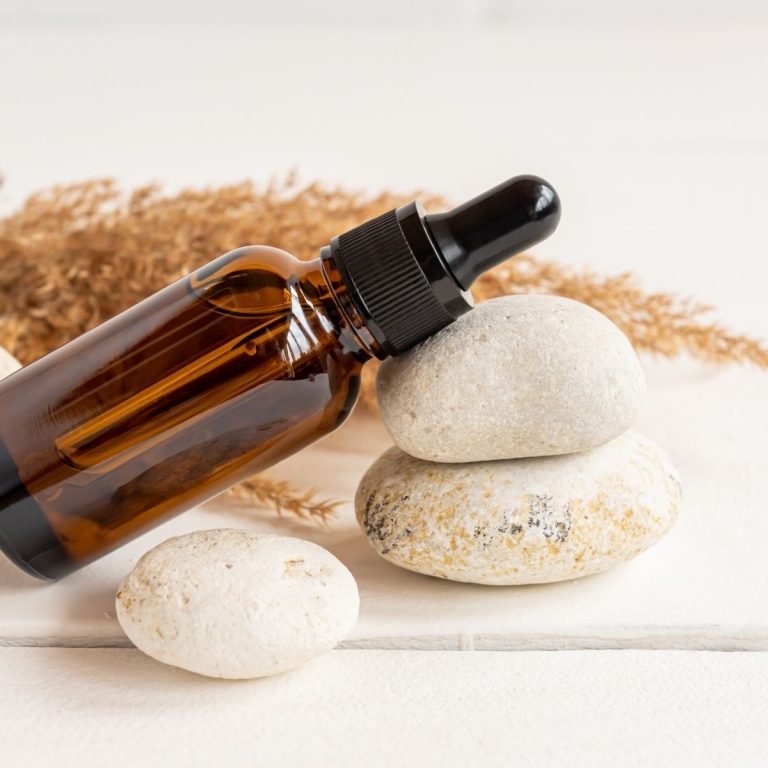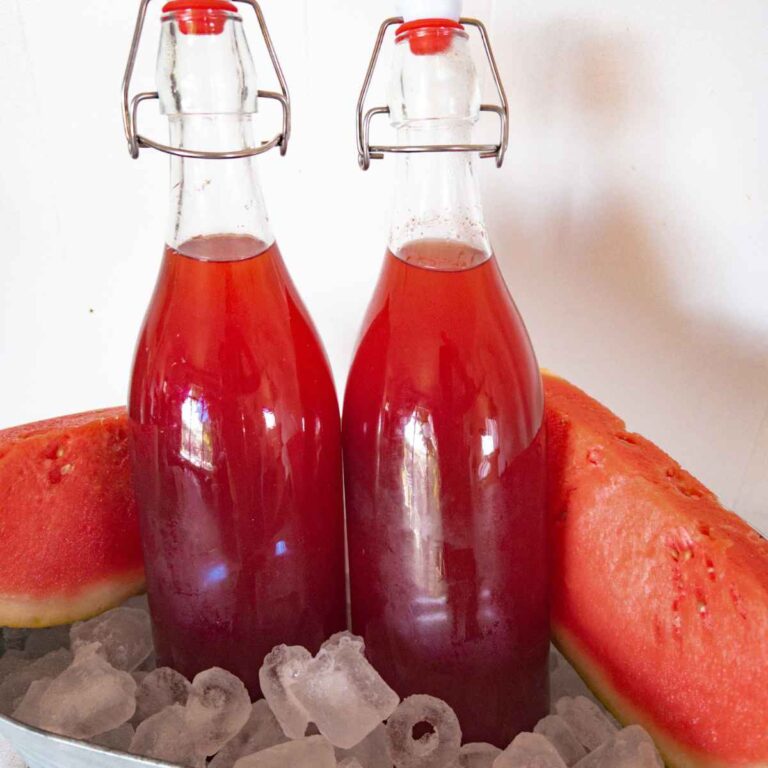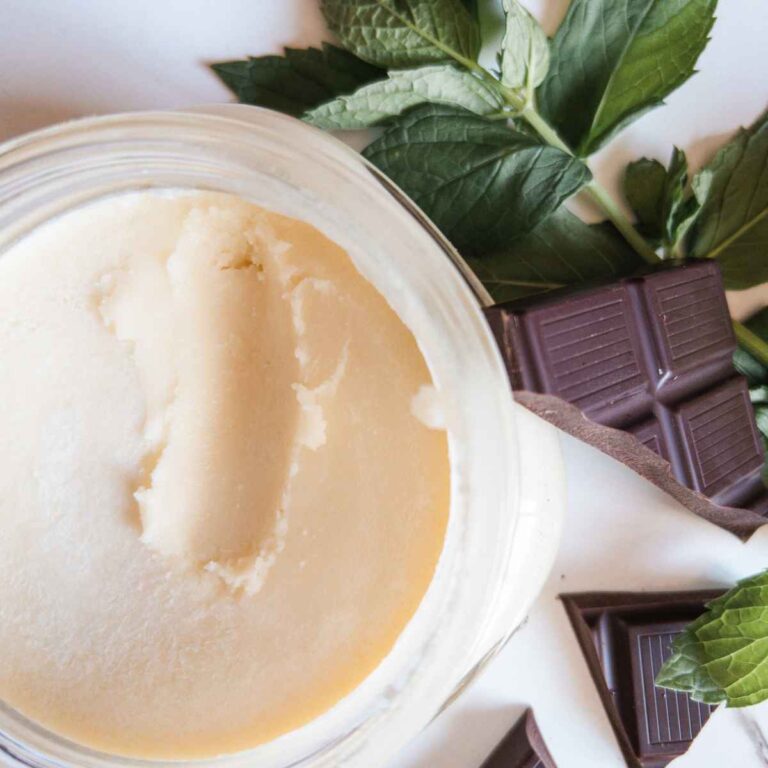The Best Plastic Free Non-Toxic Food Storage Containers
It’s no secret plastic food storage containers are full of toxic chemicals that slowly leach into the food stored in them. In this post I will give you the five best non toxic food storage containers to use instead of plastic and a very brief history on the origins of food packaging. I found it fascinating, I hope you do too!
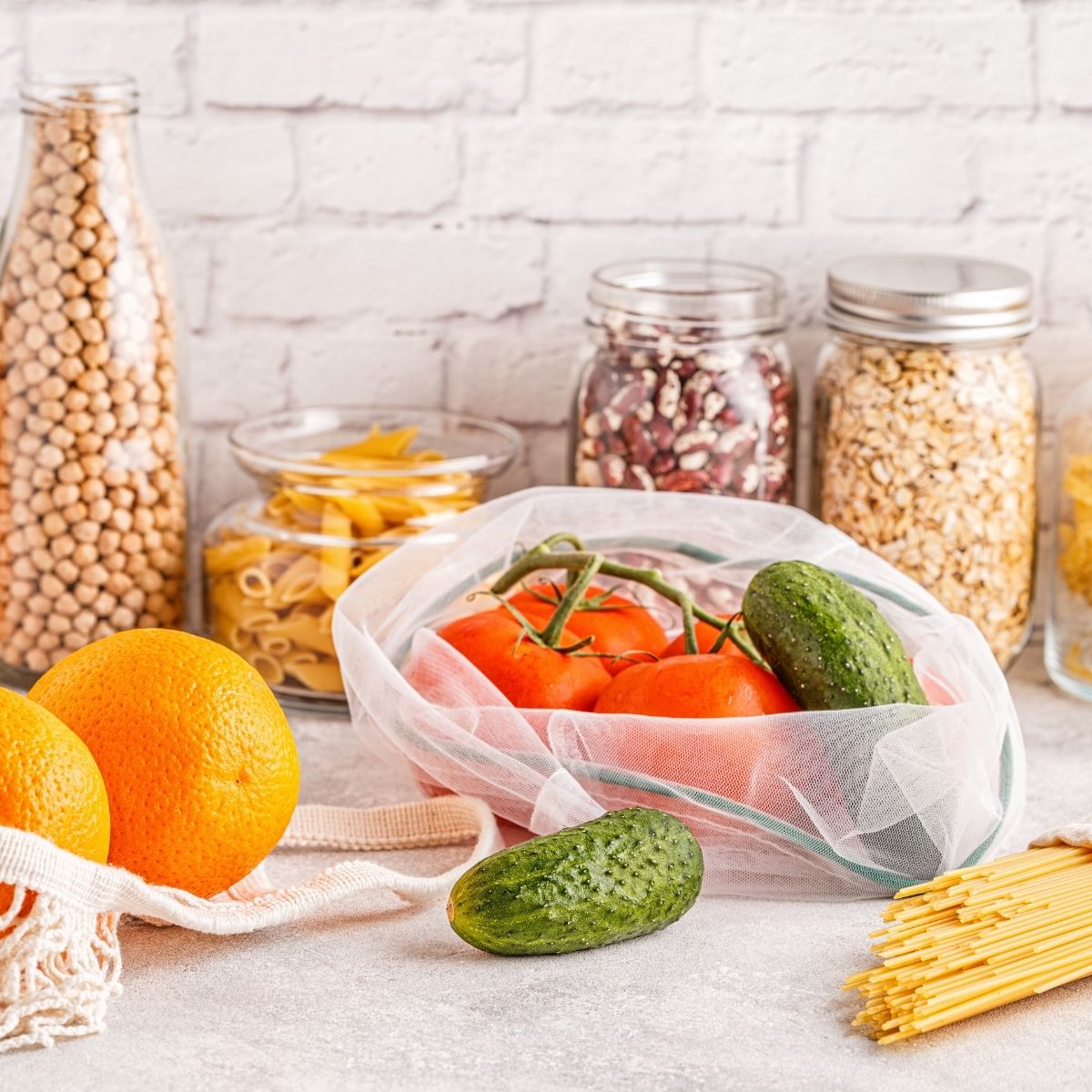
What Is BPA And Why Is It Harmful?
BPA’s are going to be mentioned a lot in this post, so just in case you don’t know exactly what those are let me give a super quick explanation.
BPA stands for Bisphenol A – a chemical commonly found in plastics, cans, and some dental products.
Research has shown that BPA will leach into the food or beverages from containers made with BPA. It’s especially harmful when exposed to heat. Bisphenol-A has been linked to high blood pressure, type 2 diabetes, heart disease, negatively affects the brain and prostate glands in fetuses and young children, and it is a known endocrine disrupter. {source}
Although the Food and Drug Administration says small amounts of BPA are safe to consume, I prefer not to take any chances if I can avoid it.
Okay, with that out of the way let’s jump in!
Best Non Toxic Food Storage Containers
- Glass Containers
- Stainless Steel
- Silicone
- Organic Cotton Bags
- Beeswax Wraps
Glass Food Storage Containers
PROS
- Eco friendly.
- You can see what’s in the container.
- Easy to clean.
- Glass containers don’t absorb smell like plastic does.
- They also don’t stain.
- Lasts for years.
- Glass doesn’t leach chemicals into the food.
CONS
- More expensive than plastic.
- Can break if dropped.
- Not very child friendly.
- Not always airtight.
The best non-toxic food storage containers are made out of soda-lime glass or Borosilicate glass.
Neither glass type is toxic but soda-lime glass is not as able to stand drastic change in temperate like borosilicate glass is.
One way to know what type of glass the container is made out of, is to look at the edge of the container. If you see a green/blueish tint, it means it’s made out of soda lime glass. Borosilicate will not have any color.
Glass containers are best used when storing food within your home like in the fridge or pantry. They are not the best to take on the go as they can more easily break. With the exception of mason jars, those things are sure durable! Maybe just don’t send one in a kids lunch bag though😉.
Glass Food Storage Suggestions
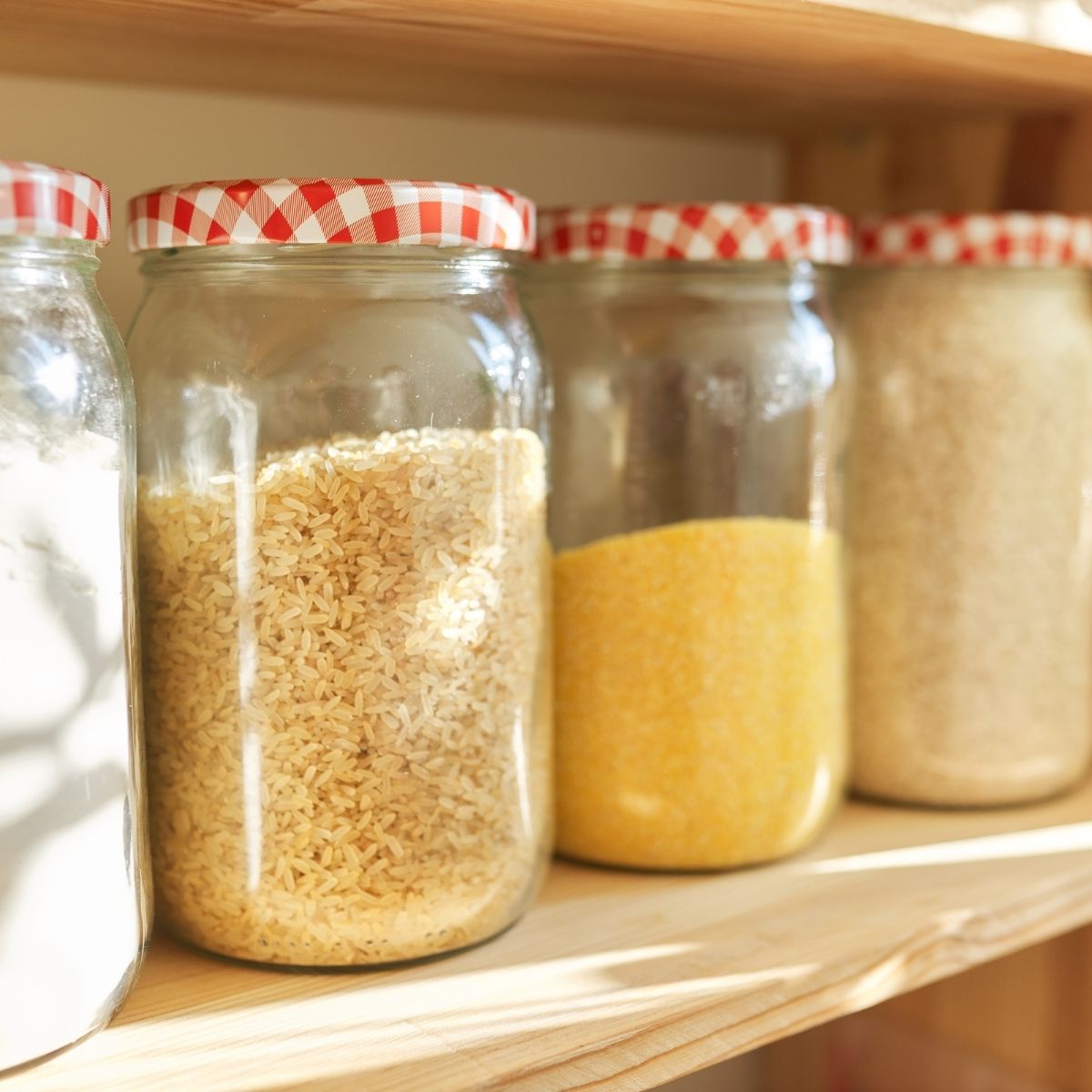
1-Recycled Food Glass Jars
A very affordable way to switch over to more sustainable options and plastic-free food storage is to reuse something you’re already buying. Even better than recycling is to wash pasta sauce, jelly, or salsa jars after you consume what’s in it.
You can use them for anything you would use a mason jar for.
- Dry goods in the pantry
- Soups
- Spices
- Acidic foods like sauerkraut
- You can even use them as beverage containers. We use them as our regular drinking glasses too.
If you’re still buying canned pasta sauce, consider switching to glass. With glass you don’t have to worry about BPA’s leaching into your food AND you get glass storage containers out of them. It’s a win-win!
2-Glass Container Sets

Caraway
If you are ready to really invest in having a kitchen completely free of plastic storage containers; Then you might want to check out the Caraway food storage set. Although on the pricey side, these food containers are so beatiful and well made. The containers are made of glass coated with non-stick ceramic and the glass lids have a food-grade silicone for a tight seal to keep food fresh.
Each container is oven, dishwasher, and microwave safe; and of course free of BPA, heavy metals, lead, PTFE which is a toxic non-stick coating, and other PFA’s.
You can purchase individual Caraway food storage containers in various sizes, or the complete 14-piece set which includes the free organizer to help with storage space in your cupboards. Think of this set as the crème de la crème of plastic-free food containers.
Pyrex
Pyrex glass containers are another great option because they come in a variety of sizes and shapes. This 18-piece set comes in different shapes, circle and rectangle, with BPA-free leak-proof lid.
If you want a set with all the same shape, this all rectangular set is awesome and prettier! if you care about that sorta thing. The BPA-free plastic lids lock into place for a more airtight seal, and they stack neatly in the fridge.
3-Mason Jars
And of course we can’t forget the timeless mason jars! Originally used for food preservation, mason jars can be used for just about anything in the kitchen.
Pack a mason jar salad for lunch, use it to store dry goods in the pantry or freezer, use them as your regular glassware, pretty much anything you can dream up, these jars will do the job!

Final Thoughts on Glass Containers
Definitely one of the best options for non-toxic food storage. You can start the switch from plastic containers to glass food containers fairly inexpensive if you get creative and reuse the things you already have in your home.
When you make the switch to glass you will have extra peace of mind knowing there won’t be any harmful chemicals or heavy metals leaching into your food.
Stainless Steel Containers
PROS
- You can find 100% plastic free containers
- Non-breakable/durable
- Young children friendly
- Doesn’t absorb food smell
- Eco-friendly
- Easy to clean
CONS
- Can be on the expensive side
- They can’t go in the microwave
Stainless Steel Container Suggestions
If you’re looking for food storage in the pantry, this 4-piece set of canisters is a great choice. With a clear lid for easy to see contents and BPA-free silicone gasket for airtight sealing.
If you’re looking for something to take on the go, this bento style lunch box is 100% plastic free. Invented by a California mom for her two young children, it’s great for on the go. It holds a total of 4-cups of food, it’s dishwasher safe and made from high quality stainless steel. The only drawback to it is that it’s not leak-proof.
For water bottles, stainless steel is definitely the way to go. Klean Kanteen and Hydro Flask have awesome choices and designs for everyone in your family.
Silicone Food Storage Containers
Get rid of all those one time use plastic bags you use to pack snacks, and replace them with reusable baggies made out of food grade silicone.
Silicone is BPA, latex, lead, and phthalates free. You can wash them and reuse them as much as you want, making them a budget and eco-friendly choice. You can buy them one at a time or in sets of different sizes.
Organic Cotton Bags
Getting 100% rid of plastic items in your home can be tricky. Every time you go to the super market you’re bringing home a few plastic bags. Maybe investing in a few cotton bags makes sense for you.
Cotton reusable bags make great non toxic food storage containers as long as they are made of GOTS certified organic cotton.
Cotton is sprayed with many chemicals and pesticides today, so make sure you buy bags made from organic cotton.
You can use them when you go grocery shopping or they’re great to store fresh produce in the refrigerator too. Make sure to wash them weekly to keep them clean if you’re using them as grocery bags.
Beeswax Wraps
A better choice to use in place of plastic wrap or aluminum foil is beeswax wraps.
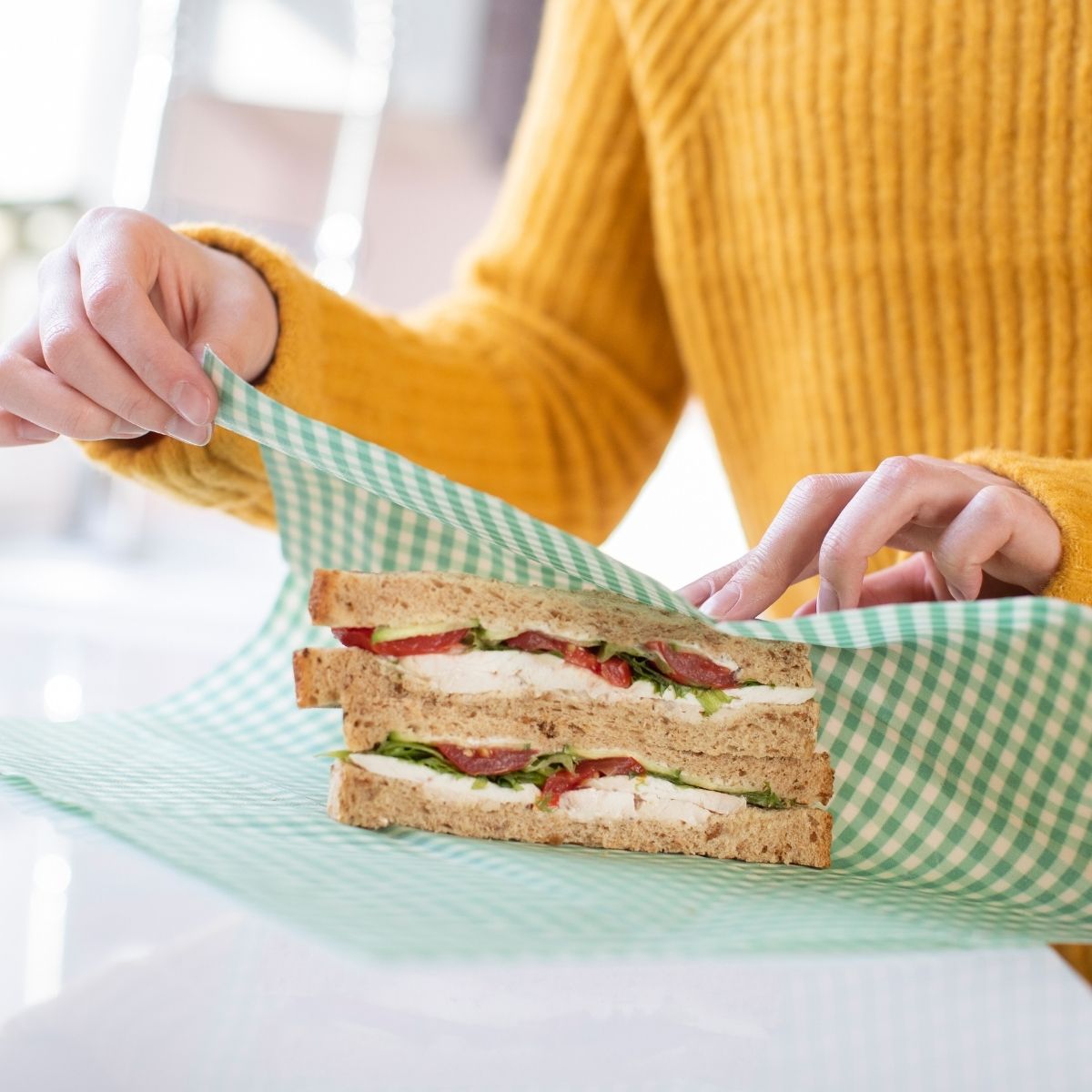
These are made of cotton cloth coated in beeswax and tree resin. They can be washed and reused many times over. I have even heard you can throw them in your garden compost when they wear out. Although I have not tried that yet, it’s easy to see how it would work since it’s made out of all natural materials.
You can wrap food with it or cover bowls of food to store in the fridge.
History Of Food Storage Containers
If the history of packaging and containers doesn’t interest you, feel free to skip over all of it. I got a little nerdy when I read the article. If you want to read the whole article head over to the ohio State University Exention Site.
In the early years there was no need for food storage containers. Families were for the most part completely self sufficient. They grew their own food, made meals from scratch and made most of their goods. If they needed a container for food they would use things found in nature. Hollowed gourds, or the bible talks about using bags made out of skins to hold wine.
The children would take their school lunch wrapped in cloth or brown paper.
For longer periods of storage they used root cellars to store “fresh” food or they would preserve by canning or salting.
Paper
Paper was first used and made by the Chinese in the first century. They made it out of treated Mulberry bark. Eventually the paper making technique made its way through other countries in Europe but it wasn’t until the 1690’s that it arrived in America.
The paper in America was first made of flax fibers and old linen.
Glass
Glass making originated in Egypt in 1500 BC. Made from melted limestone, soda, and sand, the ingredients have changed very minimally. What has changed over time is the molding technique.
What I found interesting was that making colored glass was done from the very beginning, but clear transparent glass was not discovered until the Christian era many years later.
Metal Containers
Metal was at first considered to be poisonous. Which to some extent they are, especially containers made out of aluminum and anything else containing lead.
A French Chef in the early 1800’s was the first to discover foods could last longer sealed in tin after boiling to sterilize the container. Sealed cylindrical cans were later invented and patented in 1810 in Britain.
Materials used to make metal containers has changed many times through out history as people figured out safer ways to make them. Sadly, you can still find cans that contain harmful chemicals and BPA’s at the grocery store today.
More On Non Toxic Home
- DIY non-toxic glass cleaner recipe
- Choosing a non-toxic paint for your home interiors
- Learn about essential oils in your home




